Making Beef Jerky In A Dehydrator Is Easy
Have you ever tried making beef jerky yourself? The process is quite easy and you will end with a super tasty and healthy snack. Make your jerky in a dehydrator and have the tantalizing aromas wafting through the whole house.
Who can resist munching on some mouth-watering beef jerky? If asked to choose between store-bought and homemade jerky, fans everywhere would unanimously vote on homemade ones. They are way tastier and having made them yourself there are no nasty chemicals involved.
What most people don’t know is that it’s easy to make this tasty snack within the comfort of your own home. If you are yet to try your hand at making beef jerky then we have your best tips right here. But first, get yourself a good dehydrator. There is nothing as easy or satisfying as making jerky in a dehydrator.
Quick Content Navigation
The Top 10 Tips For Making Beef Jerky
Use our top ten tips and make the tastiest beef jerky just like a professional.
Tip 1: Look For A Perfect Cut Of Beef
You can use any cut of the meat when making beef jerky. In fact, the history of jerky goes back to where the meat had to be preserved before it went rancid so any cut was used.
But, to make the best jerky using a dehydrator try to use lean cuts of meat. Preferred meat should have a fine grain, low fat, and connective tissue content.
Flank steak, round roasts, and eye of the round are some of the best lean cuts of meat for jerky. Though pricey, these cuts are ideal for dehydrating. For a cheaper option, you could also use a top or bottom round and a London broil.
Remember, the leaner the meat the better your jerky!
Tip 2: Trim Well When Making Beef Jerky
Sometimes, you might not get that perfect lean cut of meat. But don’t worry, you can still make it work! Just trim off the extra fat and any sinewy bits as they will end up very chewy.
Be sure to follow this advice because fat and sinews can also go rancid with time. This will decrease shelf-life and can be a real rookie error when making beef jerky.
Tip 3: Slice It Thin And Evenly
When it comes to deciding the thickness of your strips the rule is to slice thin. Your beef strips should be between ⅛ inch thick and ¼ inch thick.
Strips that are thicker than ¼ inches are hard to dehydrate. The drying process will take a very long time even if making beef jerky in a dehydrator. You will most likely end with strips that haven’t dried properly and spoil quickly.
If trying to use strips under ⅛ inch thick you may find they become too dry and end up crunchy. Beef strips that crunch when you bite them are NOT jerky!
Also, it is important the strips be uniform in thickness throughout for even drying. You don’t want one end chewy and the other still soggy.
To get your slices right every time you are making beef jerky you can:
- Freeze your meat for 15-20 minutes before slicing. This will firm up your meat, making it easier to slice accurately.
- Use a mechanical slicer to get evenly sliced meat with less effort.
- Ask your butcher to do it for you.
Another point to bear in mind is the texture you require for your jerky. Texture will depend on whether you cut the meat with or against the grain. Meat sliced against the grain becomes tender once dehydrated. For chewier jerky, slice the meat with the grain.
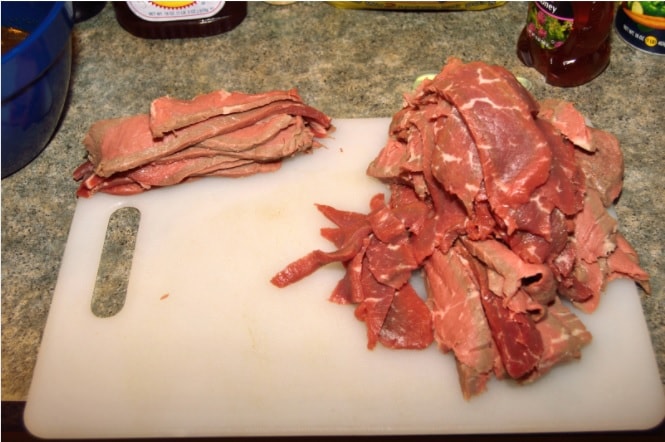
Tip 4: Marinate Before Making Jerky In A Dehydrator
The advantage of making beef jerky at home is that you can adjust the flavor to suit yourself. Make it savory, sweet or even spicy you get to choose the final taste sensation.
Most jerky lovers have a recipe which they swear by and will rarely alter. Your marinade will always have a wet base of either soy or worcestershire sauce or vinegar. You can then use either a dry rub or a wet marinade to flavor the meat.
For a savory flavor add coarse ground black pepper to the marinade mix. If it’s a spicier flavor you require add crushed red pepper flakes.
Use honey, brown sugar or maple syrup for sweetness but if making jerky in a dehydrator, put paper down to catch any drips.
For a more smoky flavor try hickory or mesquite liquid smoke, since you are not drying using a food smoker. You could also use onion powder and garlic powder to increase flavor.
To marinate the meat properly you can:
- Toss the beef slices along with the marinade in a large zip-lock bag, until it is evenly coated. Refrigerate for 24 hours for the meat to soak up the flavors.
- Dry rub the meat evenly on both sides.
Vacuum seal the meat along with the marinade in vacuum sealer bags. When under vacuum pressure the pores of the meat open and draw the marinade deeper into them.
When sealing, place a folded paper towel inside the bag right below where the seal will be. Doing this will prevent the liquid from being drawn out of the vacuum bag during sealing. Refrigerate the bags for at least 12 hours.
Do not to marinate the meat for more than 48 hours unless frozen. The acids in the marinade mix break down the cells in the meat and cause it to become mush.
Also, it is not necessary to add much liquid to the meat. After all, we are putting the meat through a drying process and the more liquid we add, the longer it will take.
Pat and dry the slices to remove excess marinade and hasten the process of making delicious beef jerky.
Tip 5: Layer Beef Jerky In The Dehydrator
When placing the beef strips in the dehydrator you must layer them evenly on the racks.
Try to avoid any overlapping or close proximity of your raw beef jerky as this will prevent correct drying. This allows for better air circulation and uniform drying of the meat.
Overcrowding or overlapping of the strips could result in uneven dehydration and potentially you will find some raw bits of beef.
Tip 6: Time It Right
To make the best beef jerky you must have the right temperature and time!
When making beef jerky set the dehydrator at 155 – 160 degrees for about four hours. After this time you should check the jerky every half hour until it is done.
Drying time is dependent upon several variables such as:
- Quantity of meat strips placed into the dehydrator. The more the strips, the longer it will take for them to dry.
- The moisture content of the beef. With more moisture from the marinade, the unit will take a longer time to heat up and dry the meat.
Tip 7: Rotate The Trays When Making Beef Jerky
This will depend on the type of dehydrator that you are using. Some units, like the Nesco Gardenmasterhave technology that eliminates the need for tray rotation.
So, if your unit doesn’t have this feature, you must rotate the trays. This will allow for even drying of each strip and tasty jerky in the dehydrator.
Tip 8: Check The Jerky In The Dehydrator
The perfect piece of beef jerky will not break when bent. It will be chewy and leathery in texture.
To check for ‘doneness, remove a jerky strip from the dehydrator rack and allow it to cool. Once cooled, bend the strip to check if it:
- Cracks or breaks – over-dried and beyond the flavor point.
- Bends but does not crack – well done.
- Moisture squeezes out – it is not done and needs to go back to the unit for more drying.
Tip 9: Store It Tight
Increase the shelf-life of your beef jerky and store in airtight containers or vacuum seal and freeze them. Your homemade jerky will last for at least a month in an airtight container.
Our best storage solution when making beef jerky is to vacuum seal it as this will last up to 6 months.
Always store your jerky in a cool, dry place.
Tip 10: Safety Tips For Making Beef Jerky
To safely prepare jerky you must remember these important things.
- Trim all of the fat. This will ensure it won’t go rancid and decrease the shelf-life of the jerky.
- Dry the jerky properly. Any leftover moisture will allow bacteria to grow.
- Cool the jerky thoroughly before storing. If your jerky is still warm when stored it can sweat and lead to mold formation.
Conclusion
Now you know how easy and simple it is to make your own beef jerky. Our best advice is to get yourself a top notch food dehydrator so check our .
We would also suggest using a vacuum sealer to store your jerky. This will ensure the longest shelf life and no loss of flavor over time.
Use our tips to perfect your technique of making beef jerky, and have fun making large batches of jerky in a dehydrator.
We have a great article on the many ways of preserving food to read.

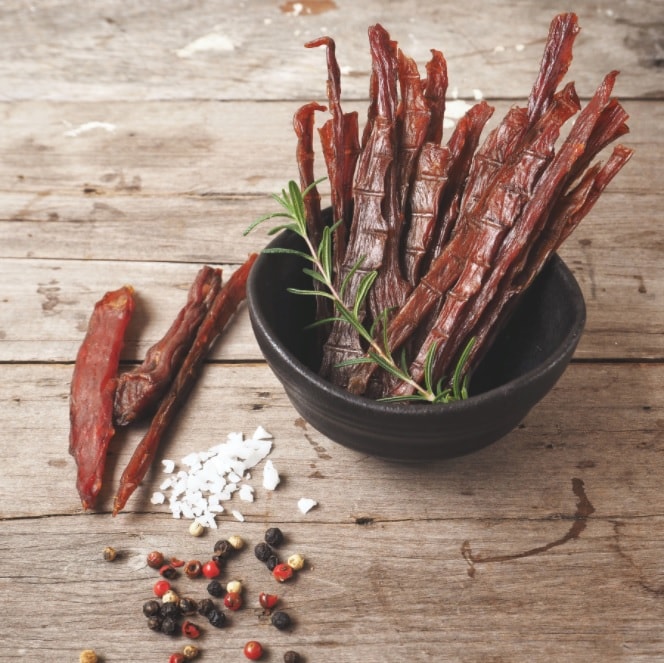
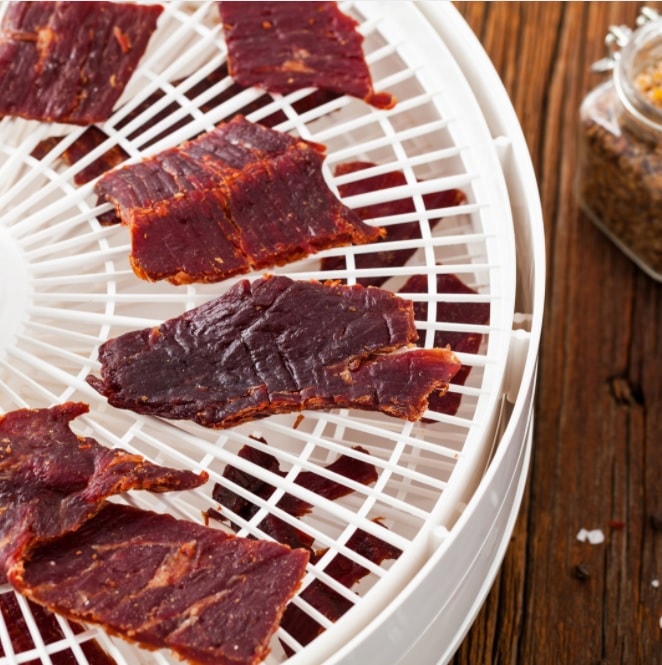
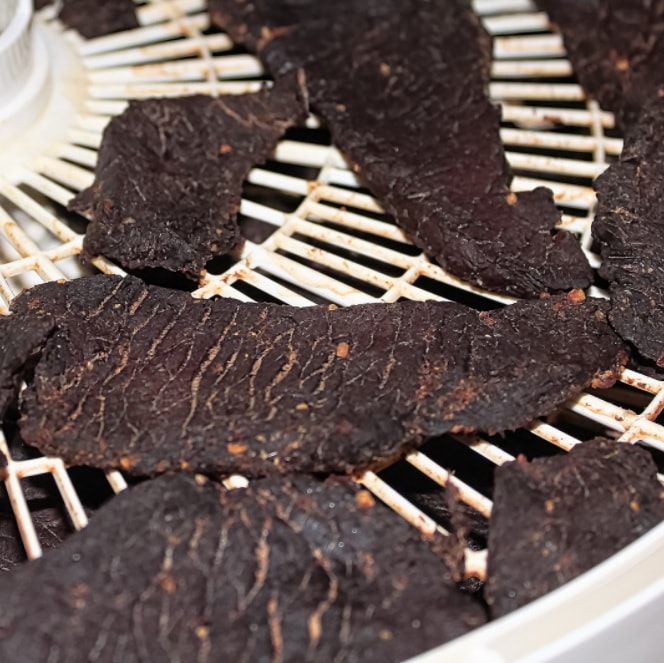
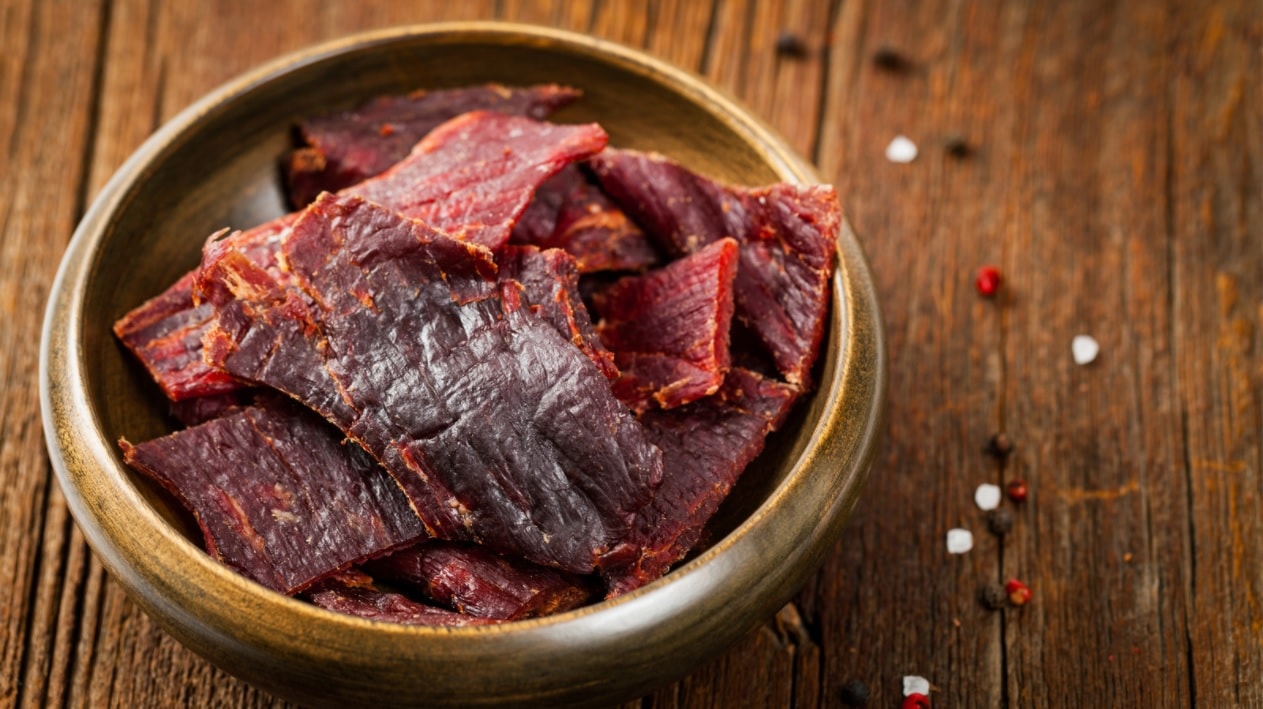
 Hi! I’m Sally-Anne!
Hi! I’m Sally-Anne!
Hi, I just discovered your blog via Msn. Your own article is actually pertinent to my life at this moment, and I am really happy I ran across your blog post.
Can you tell us more about this? I’d love to find out some additional information.
We have another article on dehydrators for jerky https://besthomepreserving.com/6-best-dehydrators-for-jerky/
What’s up friends, pleasant article and nice urging commented at this place, I am truly
enjoying by these.
Woah! I’m really enjoying the template/theme of this
blog. It’s simple, yet effective. A lot of times it’s hard to get that “perfect balance” between user friendliness and visual appearance.
I must say that you’ve done a fantastic job with this.
Additionally, the blog loads very fast for me
on Safari. Exceptional Blog!